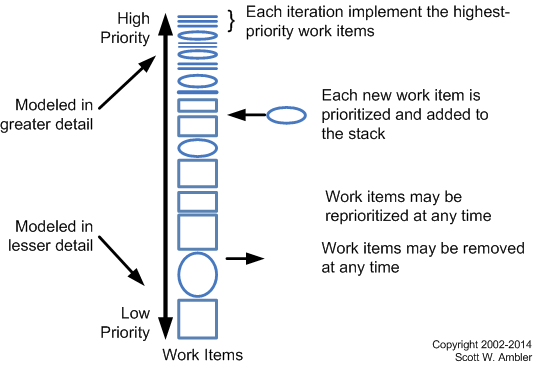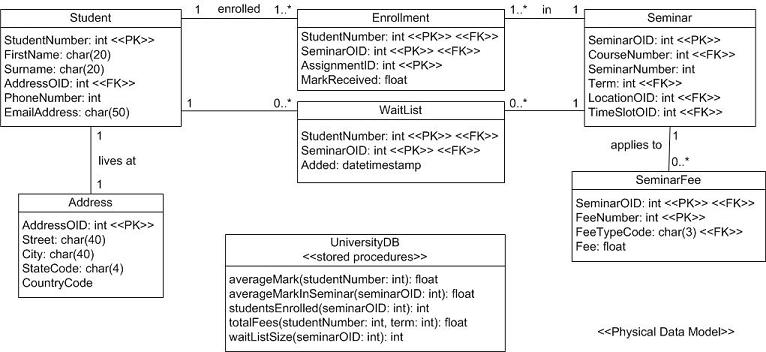Iteration/Sprint Modeling: An Agile Core Practice
How Much Sprint Modeling?
My experience is that a two-week sprint will have roughly half a day of sprint planning, including modeling, whereas for a four-week sprint this effort will typically take a day. The goal is to accurately plan the work for the sprint, identify the highest-priority work items to be addressed and how you will do so. In other words, to think things through in the short term. The goal isn’t to produce a comprehensive Gantt chart, or detailed specifications for the work to be done. Figure 1 depicts the sketch for the design of a student information editing screen. This sketch was made on a whiteboard by the product owner, the person responsible for describing and prioritizing requirements for the team, when asked to describe the details behind the “A student maintains their basic information” user story which is to be implemented this iteration. Notice how the sketch is fairly rough but gets the idea across — it would have been drawn in a few minutes by the product owner as they explained to the team what they expected the system to do. Based on this information the team can now accurately estimate the work to be done to implement this screen. Previously they had no idea that the product owner expected this screen to list the person’s seminar history.
Figure 1. Sketch of a screen to be built during this iteration.
Figure 2 depicts a quick sketch of a physical data model (PDM) sketched out by the architecture owner on the team as he explained the concept of introducing an associative table, Enrollment, to implement the many-to-many association between Student and Course. Although some details are clearly missing, this is enough information required for the architecture owner to explain to the other developers on the team why her estimate was higher that everyone else’s for implementing this requirement. Remember, the goal at this point in time is to simply plan the work. If more details are required, as shown in Figure 3, they can be identified through more detailed model storming throughout the iteration and/or in the form of tests via a test-driven development (TDD) approach. The level of detail in Figure 3 isn’t required at this point in time — remember, agile models are just barely good enough (JBGE) for the current situation, and at this point in time you only need enough information to plan the iteration.
Figure 2. Sketch of a physical data model.
Figure 3. Detailed data model (not created during Iteration Modeling).
Why Sprint Modeling?
An often neglected aspect of Mike Cohn’s planning poker is the required modeling activities implied by the technique. Agile teams implement requirements in priority order, see Figure 3, pulling an sprint’s worth of work off the top of the stack. To do this successfully you must be able to accurately estimate the work required for each requirement, then based on your previous iteration’s velocity (a measure of how much work you accomplished) you pick that much work off the stack. For example, if last iteration you accomplished 15 points worth of work then the assumption is that all things being equal you’ll be able to accomplish that much work this iteration. This activity is often referred to as the “planning game” or simply iteration planning.
Figure 4. Agile requirements change management process.

How Does Sprint Modeling Fit In?
Figure 5 depicts the high-level lifecycle for Agile Model Driven Development (AMDD) for the release of a system. Iteration/sprint modeling occurs at the beginning of each iteration as part of the overall iteration planning activities. It is only one of several points in time that you’ll model on an agile project: You do some initial requirements and architecture envisioning at the beginning of the project to enable your team to get going in the right direction, you do iteration modeling, and you do just in time (JIT) model storming to explore the detailed requirements and design throughout an iteration.
Figure 5. The AMDD lifecycle: Modeling activities throughout the lifecycle.



